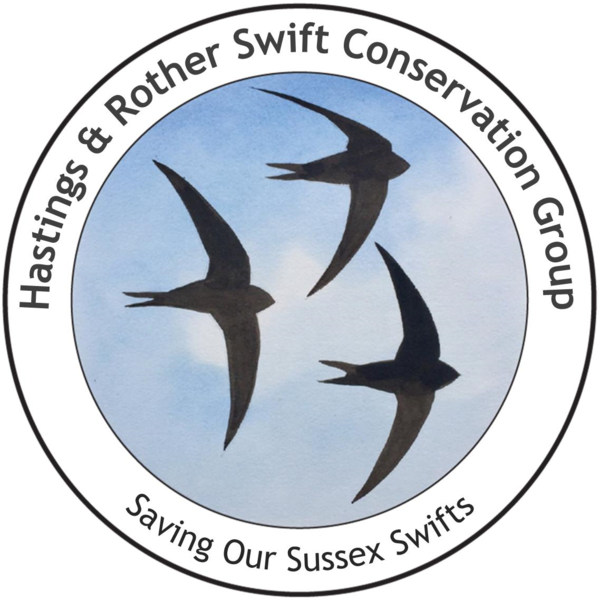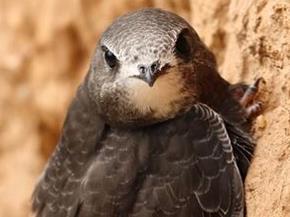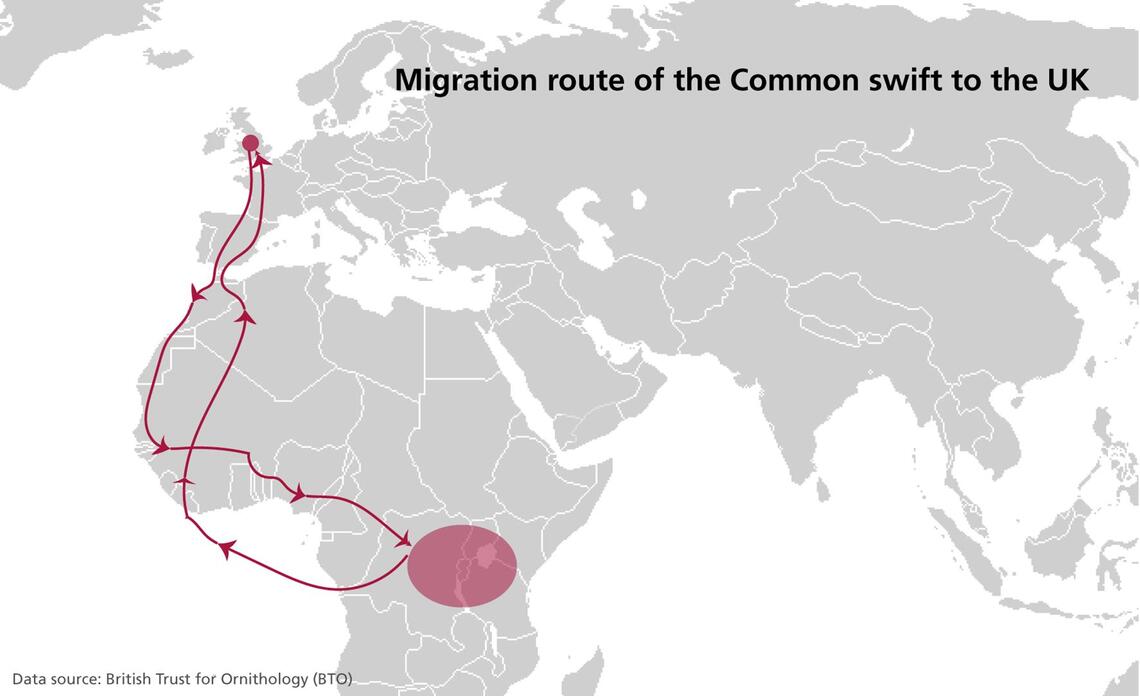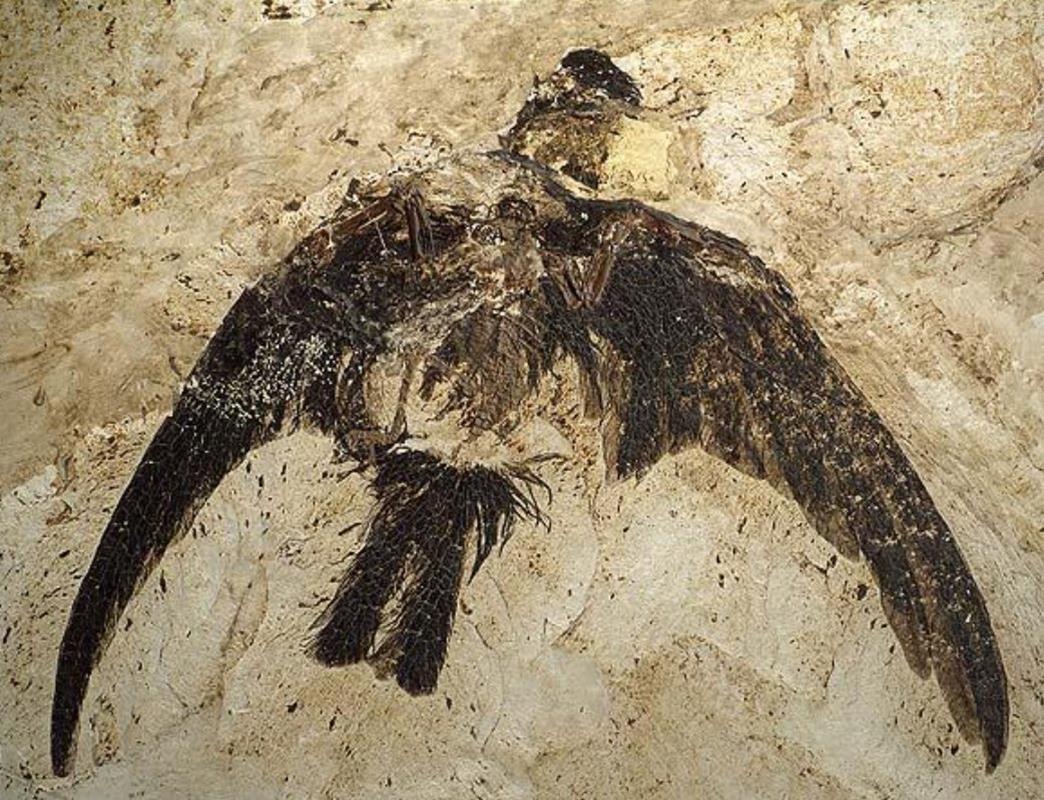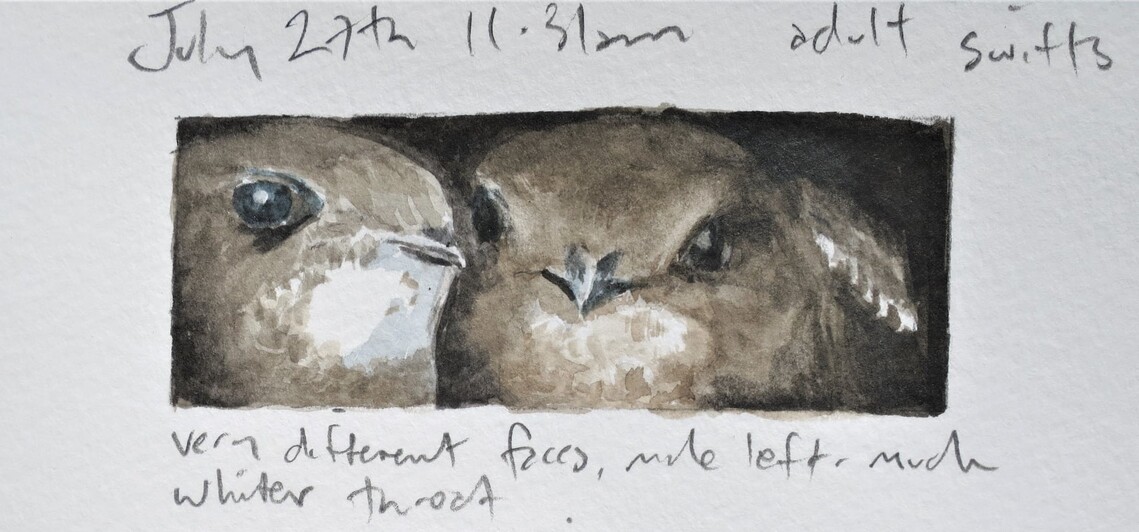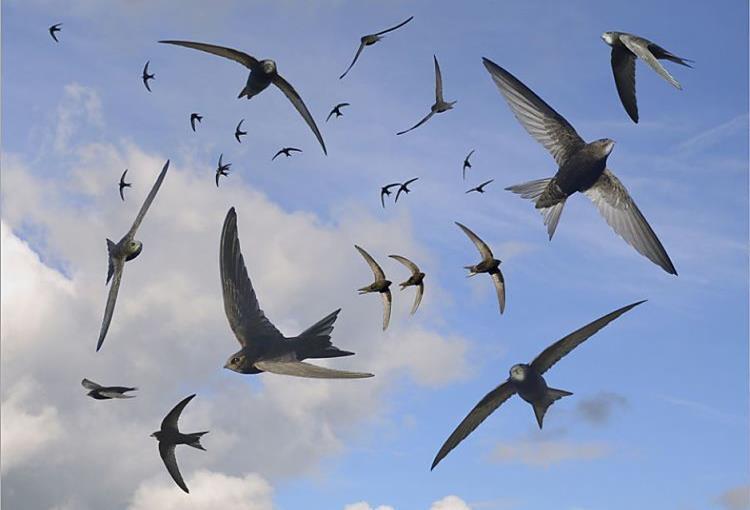Swifts are summer visitors to the UK, arriving in April to breed and returning to Africa in late August to spend their winter south of the Sahara. A round trip distance of roughly 20,000 kilometres.
The swift's long, narrow wings are superbly adapted for fast flight. As a group, swifts are the fastest of all birds in level flight and can reach almost 70 mph (112 kph).
Photograph courtesy of Robert Booth
Their scientific name Apus Apus means 'footless' - although they actually have tiny but powerful feet and legs that are only used to cling to vertical surfaces at their nest sites.
Swifts are known to live for up to 21 years, but on average live about 9 years.
Pairs bond for life from the age of one year and may choose a nest site to roost, but only start breeding at maturity, which is normally four years.
Nesting material is gathered on the wing - feathers, leaves, straw, paper - and stuck together with fast hardening saliva to form the nest. They lay two to three smooth white eggs that are slightly more elongated than normal bird eggs.
Swift egg and one newly hatched chick
Nests are located high up in nooks and crannies of old buildings, churches and under the eaves of old houses where the birds are able to drop into the air from the nest entrance. They will also use suitably sized nest bricks and boxes.
Swifts return to the same nest site every year. Their screaming calls around rooftops announce their excited arrival. If the nest site has been destroyed, or blocked by 'home improvements' the swifts give up and stop breeding.
Swifts eat, drink, preen, sleep and mate in the air. They routinely fly to 10,000ft at night to sleep and can automatically stay on course.
They drink by catching rain drops or gliding over smooth water and scooping sips.
Photograph courtesy of Robert Booth.
They eat flying insects and airborne spiders, forming a ball (bolus) of up to 20,000 of them in a pouch in their throat until they either swallow the ball or deliver it to their brood.
Photograph courtesy of David Moreton
Insects can be scarce in bad weather and parent swifts will fly hundreds of miles to gather food. The chicks can go cold, fall into torpor and survive for days without food until the parents return. Most baby birds can't do this and would die.
The length of time chicks spend in the nest depends on how good the food supply has been. From two to three weeks old the young birds start to exercise their wings by doing press-ups on their wing tips in the nest. They are generally ready to fly after about 40 days and when their wings are long enough - 16cm from shoulder to wing tip.
Once they launch off on their first flight young swifts are immediately independent, never return to the nest and are no longer cared for by the parents.
Some young swifts will immediately start the long flight to Africa. Other young birds may stay a few days longer and investigate potential nest sites for when they return the following year. They are sometimes called 'bangers' or prospectors, as they can be seen to bang their wings on nest boxes to discover whether or not it has occupants
Watch this 48 second video: 'One Swift's Migration Journey'
When a young swift leaves the nest for the first time it will remain in the air for almost one year, sometimes two, until it returns to its chosen area to meet its mate. They may not breed for two or three years, but may be seen prospecting and claiming a nest site and bringing nesting material in. They often use the nest to roost overnight.
Swifts have specialised parasites that seem to have evolved with them, but don't appear to do them much harm. This supports the fact that swifts appear to have separated from other species a long time ago. This fossil is 49 million years old!
... And, if the above basic introduction to swifts whets your appetite for more, we recommend reading 'The Mysterious Life of Birds Who Never Come Down' - a beautifully written essay by Helen Macdonald. It is an extraordinary and uplifting article ... inspirational, sad, beautiful, educational, enchanting and thrilling...
Over 200 comments in awe of the article, include:
"What a magnificent writer. It is no coincidence that her words fly as high and far as the birds she admires".
"This essay was deeply moving and healing for me—powerful, lyrical, filled with the beauty and wonder of both science and nature, and so beautifully written. Writing about nature doesn't get much better than this. Thank you, most sincerely".
Artwork image courtesy of: Jonathan Pomroy
Swift Conservation - Discover how the RSPB are taking action to help Swifts by clicking here.
All those questions you ever wanted to ask about swifts ... answered!!
In March 2021 the Leeds Swift Group produced an hour long video of their zoom presentation and meeting entitled 'Swift Conservation and Rehabbing'. It's packed full of loads of interesting facts, information and videos - and is highly recommended. Click here to watch. Well done Linda Jenkinson!!
Finally - A Message for the Protection of Swifts by Dr. Jane Goodall - Primatologist and Anthropologist
